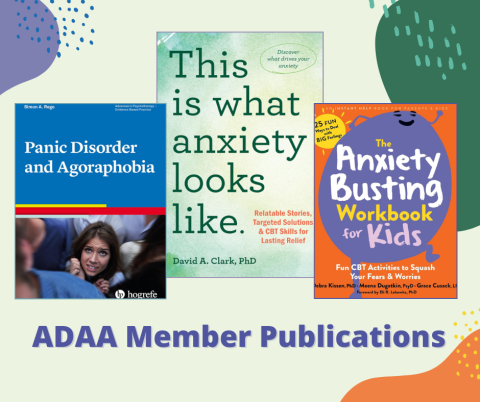Ease Your Return-To-Work Anxiety
Ease Your Return-To-Work Anxiety

After more than a year of remote work brought on by the COVID-19 pandemic, many employers are eager to bring their staff back to the workplace. For some people, returning to the workplace is a mark of normalcy and opportunity for social connection. But for others, the prospect of transitioning to in-person work is anxiety-inducing. If you are feeling uneasy about returning to the workplace, know that you are not alone.
A recent global survey from Limeade Institute1 surprisingly found that 100% of respondents indicated some degree of anxiety about returning to the workplace. The survey included 4553 full-time employees from Australia, France, Germany, the United Kingdom, and the United States who were working on-site before the pandemic but now were working from home. The top return-to-work sources of anxiety included: exposure to COVID-19 (77%), less flexibility (71%), and commuting to work (68%). These results indicate that most of us are not only worried about our health and safety, but also concerned about losing our newfound autonomy and flexibility.
Each of us manages stress in our own ways—some healthy and some unhealthy. Being proactive can help minimize some of the more unproductive behaviors. Here are a few suggestions to help you navigate through these unpredictable times:
- Be kind to yourself and others. This is a new situation for everyone. Despite our best efforts to get things right, mistakes are bound to happen. Be extra patient and understanding with yourself and with others as we move forward towards a stronger, more equitable future.
- Simplify your daily routine. When your day is in a constant state of flux, it can be helpful to streamline your routine. Try to outsource mundane responsibilities like cleaning and laundry, join a carpool, and schedule in joyful activities that boost your mental and physical health.
- Prepare in advance. Returning to the workplace will be easier the more prepared you are. Rehearsing your daily routine is one way to combat first-day jitters. It will also give you an opportunity to sort out any glitches like bus schedule changes or misplaced office key cards.
- Talk to your employer. Get as much information as you can about the changes to your working schedule and environment. Find out what flexibilities are available to you. Having answers to your questions ahead of time can help ease your return-to-work anxieties.
- Find ways to stay safe. Read over your workplace’s COVID-19 safety policy, so you know what is expected of you and others. Knowing the policy can help you advocate for your own safety and comfort. You are also free to set clear safety boundaries with your coworkers.
- Learn positive coping skills. When anxiety of the unknown starts to rise, sometimes the best first step is simply to pause and breathe and recenter yourself. You can also try practicing radical acceptance—the knowing that while you cannot control life’s circumstances or other people’s behavior, you can control your own perceptions and responses to them. You can also try letting go of the need-to-know—allowing the mystery of life to unfold moment by moment.
- Connect with your social support network. While your experiences are unique, there are elements that are shared by many. Find ways to engage others in dialogue and productively share feelings about the transition. The workplace can be a great source of meaningful connection.
- Seek professional support. Some degree of anxiety is to be expected; however, if your level of distress interferes with your daily functioning it may be time to seek professional support. The past year has been challenging and returning to the workplace may trigger preexisting symptoms of depression, anxiety, or PTSD. Some of us need a little bit more support when it comes to managing our symptoms and this is completely okay.
1Sandhu, R. (2021). The new normal: facing the challenges of returning to work. Limeade Institute.

















